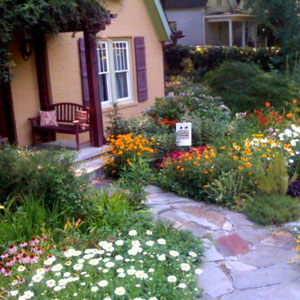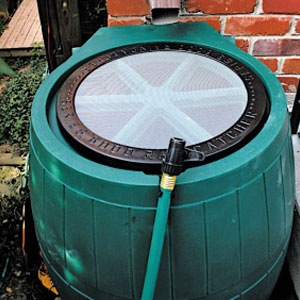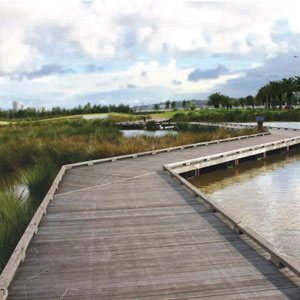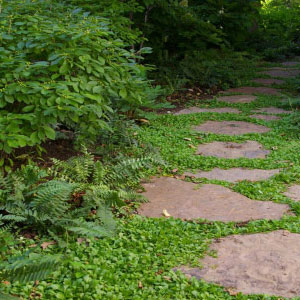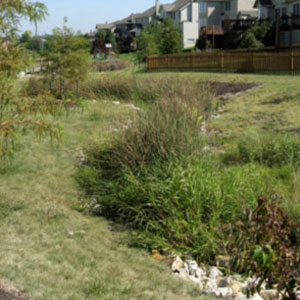
This vegetated bioswale helps capture rainwater behind a residential development in Chicago, Illinois. Image credit: US EPA
Create a Rain Garden
A rain garden is a strategically located low area where water can soak naturally into the soil. Rain gardens can be any size or shape and are easily integrated into your overall landscape.
Locate and size your rain garden appropriately.
Homeowners should locate rain gardens in an area where rainwater runoff naturally occurs and can be easily collected. This may be near the house where downspouts capture roof runoff or out in the landscape where water from the roof, lawn and other impervious surfaces can be captured.
A typical residential rain garden is sized from 100 to 300 square feet. The size and shape of the garden can vary depending on the amount of water being captured and the size of the landscape. Where large volumes of water need to be managed, it is typically easier to construct several small rain gardens rather than one large one.
Factors to consider when locating a rain garden:
- Locate underground service lines or utilities prior to digging.
- Rain gardens should be kept at least 10 feet from the house to prevent moisture problems.
- Locate rain gardens at least 25 feet from septic systems.
- Avoid placing rain gardens directly under trees to prevent conflicts with roots.
- Avoid placing rain gardesn on slopes where the elevation change is greater than 1 foot to every 12 feet.
- Avoid placing rain gardens in areas where water currently ponds. Standing water is an indication that the soil is slow to absorb water.
- Consider where water from the garden will overflow during periods of heavy rainfall. Design the garden so that it does not overflow onto a neighbor’s property or directly into the street. Rain gardens can be designed so that overflow from one garden is directed to a second rain garden, bioswale or water feature.
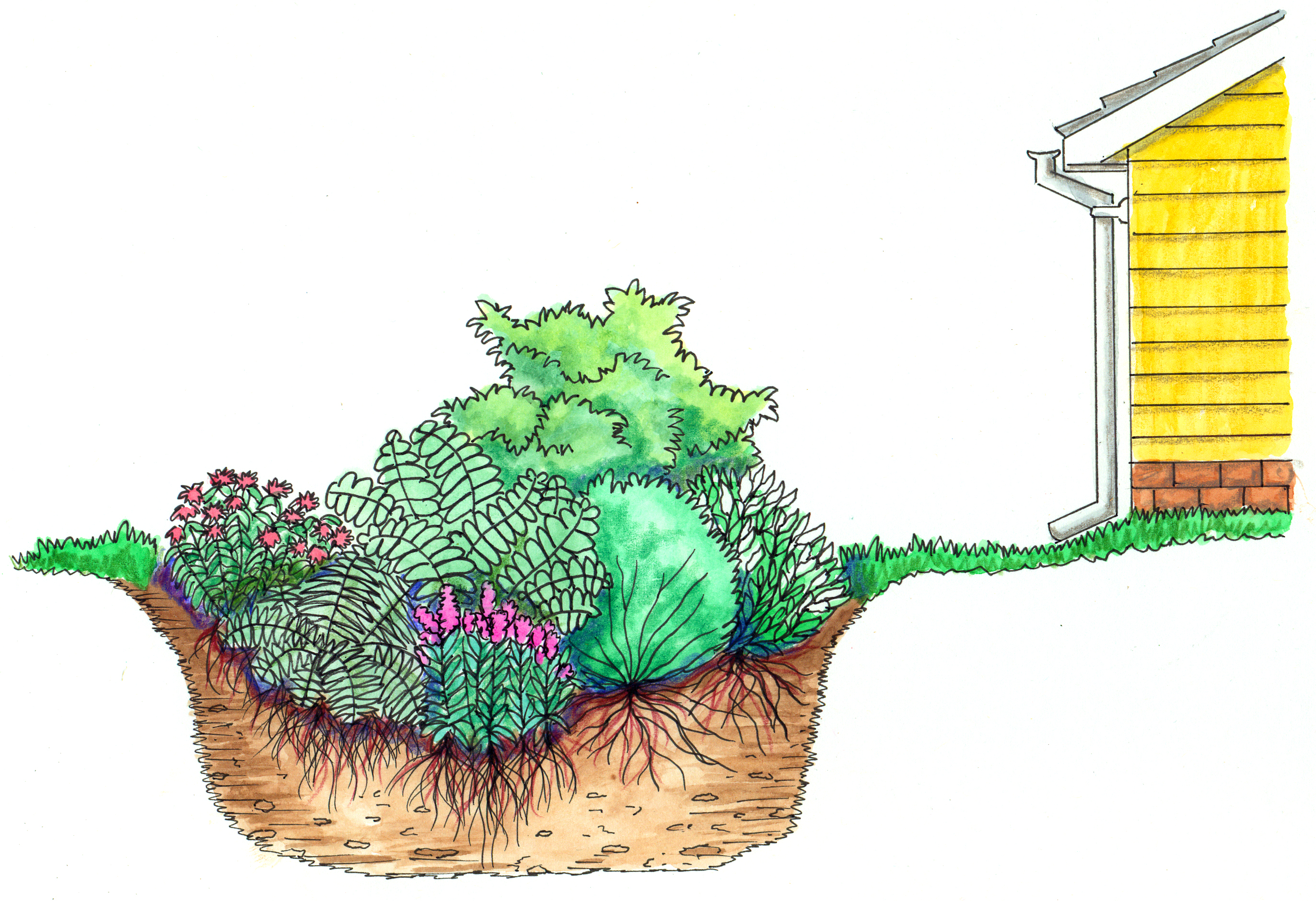
Rain gardens help rainfall soak into soil slowly and naturally. Image credit: Landscape For Life
Determine the drainage area.
Calculate the area draining to the rain garden in square feet. A general rule of thumb is to make the rain garden 30 percent of the size of the drainage area.
Conduct a drainage test.
Dig one or two test holes approximately 8 inches wide and 8 inches deep in the proposed garden area. Fill the hole completely with water and observe how long it takes the hole to drain. Homeowners should avoid locating rain gardens in areas where the test holes do not fully drain within a 24-hour period.
Determine the garden depth.
The depth of the garden depends on the soil type and how quickly water can be absorbed. Clay soils absorb water more slowly than sandy soils. To avoid drowning plants in clay soils, the garden depth should not exceed 6 inches. Heavy clay soils can be amended with compost to speed drainage. Rain gardens located in more sandy soils can be up to 8 to 12 inches deep.
Dig the garden.
Rain gardens can be dug with standard garden tools. Regardless of the depth, the goal is to keep the bottom of the garden level. A low berm should be created around the downhill sides of the garden to contain the water. Rainwater runoff can be directed to gardens from other portions of the landscape via bioswales or pipes.
Plant the garden.
A rain garden is comprised of three wetness zones. In the lowest zone, plant species should be selected that can tolerate short periods of standing water as well as fluctuating water levels and dry conditions. In the middle zone, vegetation will need to tolerate both wet and dry conditions. In the upper zone, along the outer edges of the berm, plants should be selected that prefer dryer conditions. After planting, apply a 2 to 3 inch layer of organic mulch to reduce weeds and protect and enrich the soil.

